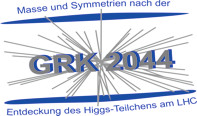Rare meteorite found after fireball observation in Oman
Six cameras observe the night sky in Oman's central desert, in collaboration with the Global Fireball Observatory. These cameras are used to observe large shooting stars, known as fireballs, and help determine the impact site of meteorites. On December 23, 2023, a fireball lasting 3.3 seconds was recorded by four cameras. After reconstructing the trajectory and fall location, an Omani-Swiss field team found the meteorite on February 10, 2024, near an abandoned drilling site called Raja in Oman's Al Wusta province.
The meteorite has a weight of only 26.8 grams and was found 49 days after the fireball. The connection between the observed fireball and the recovered meteorite was confirmed by the detection of the short-lived radioactive isotopes manganese-54 and sodium-22, which are only produced in space. These isotopes were clearly detected by Freiburg's gamma spectrometer GeMSE. This highly sensitive instrument is set up in the Vue-des-Alpes deep laboratory in the Neuchâtel Jura (Switzerland). The optical and electron microscopic examination showed that the meteorite belongs to the rare group of enstatite chondrites. The meteorite also contains a previously unknown mineral. The Meteoritical Society has officially classified the meteorite as "EH3" and given the meteorite the official name "Raja" after the place where it fell.
Enstatite chondrites contain minerals that are not stable in the Earth's atmosphere. Its rapid recovery from the desert therefore provided valuable, unaltered material for study. Analysis of Raja's trajectory shows that it came from the asteroid belt between Mars and Jupiter. Small meteorites make up the majority of all meteorites that reach Earth, but are rarely recovered because they are difficult to find. Raja is therefore an important contribution to our understanding of the overall flow of meteorites to Earth.
Contact:
Prof. Dr. Marc Schumann
Institute of Physics, Universität Freiburg, Germany
marc.schumann@physik.uni-freiburg.de
+49 761 203 96894
Prof. Dr. Beda Hofmann, Naturhistorisches Museum Bern
+41 31 350 72 40
Contributions of the participating institutions:
Ministry of Heritage and Tourism, Sultanat Oman: Administrative lead of the meteorite project in Oman, operation of the cameras
Swiss Institutions (Naturhistorisches Museum Bern, Musée d’histoire naturelle de la ville de Genève, University of Bern):
Scientific lead of the project, co-operation of the cameras.
Curtin University, Perth, Australia: Delivery of All-Sky-Kameras, processing of the fireball data.
Institute of Physics, Albert-Ludwigs-University, Freiburg, Deutschland: Operation of the underground-based gamma spectrometer GeMSE, support with data analysis.





